Edible wild greens start popping up in early spring and, across most regions, are plentiful and easy to forage. They’re nutritious, delicious, and free! Learn which edible weeds to look for when spring starts in your area.
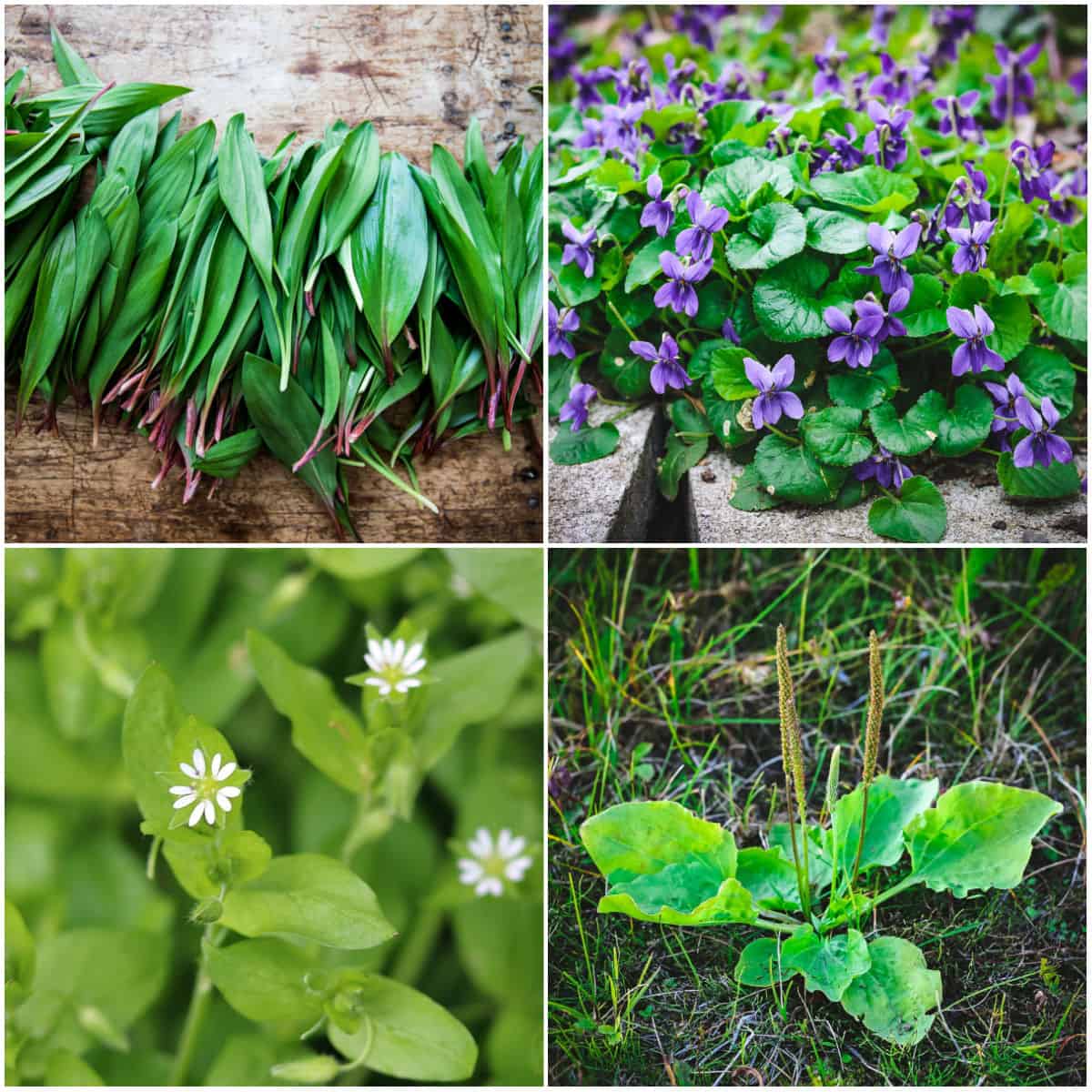
Want to save this post for later?
Edible Common Weeds
Since I’m from the West Coast (Oregon) and now live in the cold, hard North (Vermont), I’ll preface this by saying here that “Early Spring” is a relative term. It can be as early as February in warmer zones and as late as May in colder zones.
When spring begins, these are the first edible wild plants that are available to forage in most regions. As spring goes on, foraging options abound. But keep your eyes peeled early in the season for these nutritious and delicious goodies!
All of these wild greens are beneficial, and some are even considered superfoods. In addition to all the vitamins and nutrients, some also have medicinal benefits.
Finding wild, edible greens to eat isn’t difficult, as most of them grow in most areas of the United States. In fact, it’s quite possible that you’ll find some of these right in your backyard!
While it may take some nuance to know when to look for what, depending on your region, these early spring greens are easily identified, tasty, and well worth the walk!
Edible Weeds to Forage in Early Spring
This list of plants is in order of when they usually pop up, but that will also be dependent on the region. So don’t be surprised if you see some before others!
Dandelion Greens
You’re likely to see the sunny faces of dandelions (Taraxacum officinale) very early on in your spring season. They have delicious, if slightly bitter, edible greens that are highly nutritious too.
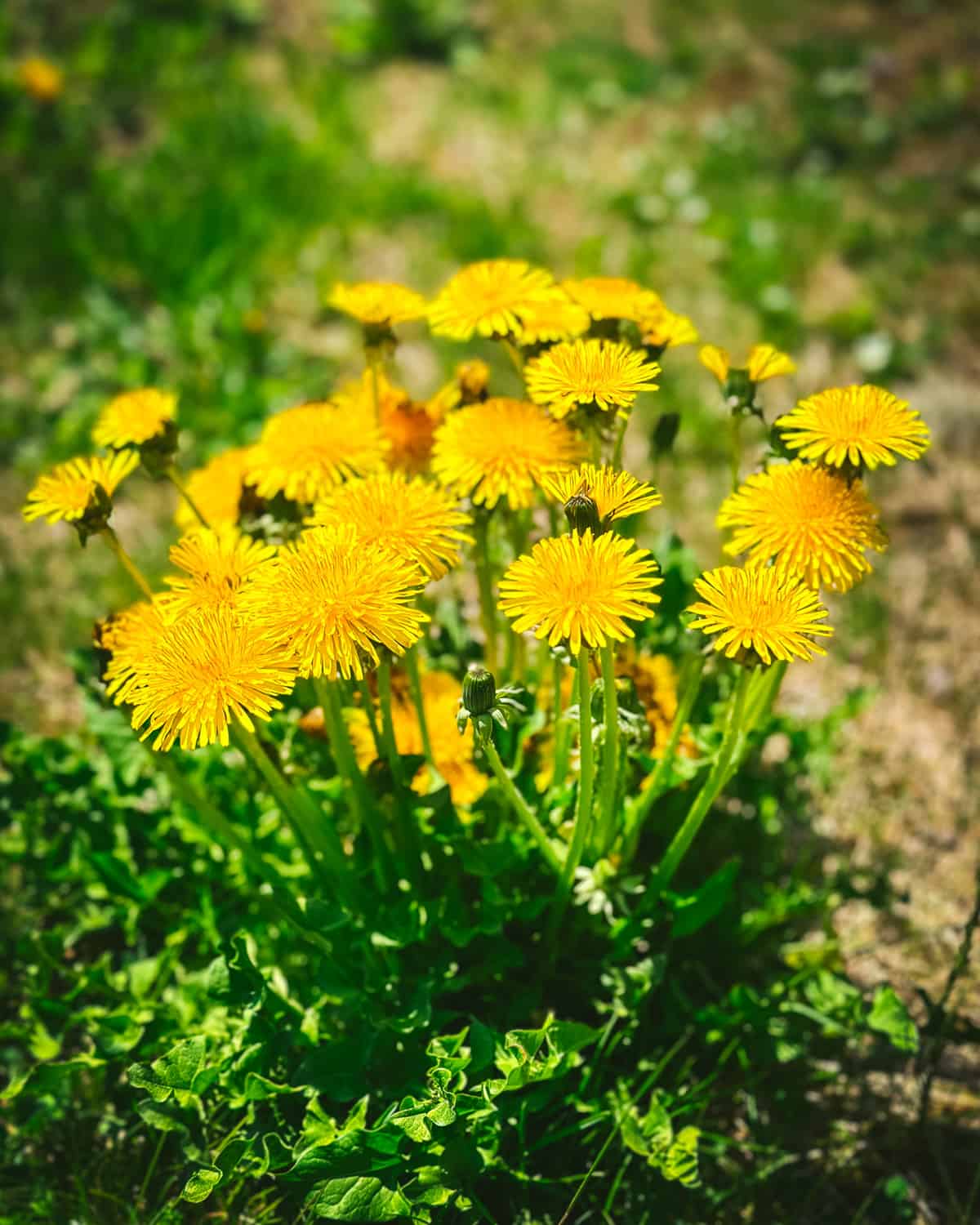
Dandelions are instantly recognizable to most, so foraging for them is usually no problem in general.
It’s important to remember areas that might be sprayed with chemicals by humans who don’t understand this humble weed’s potential. All parts of the dandelion are edible, but we’ll focus on those wild greens for this post.
In warm regions, you might find dandelions blooming all year long. In most places, though, they’ll be the first edible weed you see.
They have spiky basal leaves that grow only from the bottom of the stem. Dandelion leaves are at their most tender in early spring, so this is a great time to harvest them for eating.
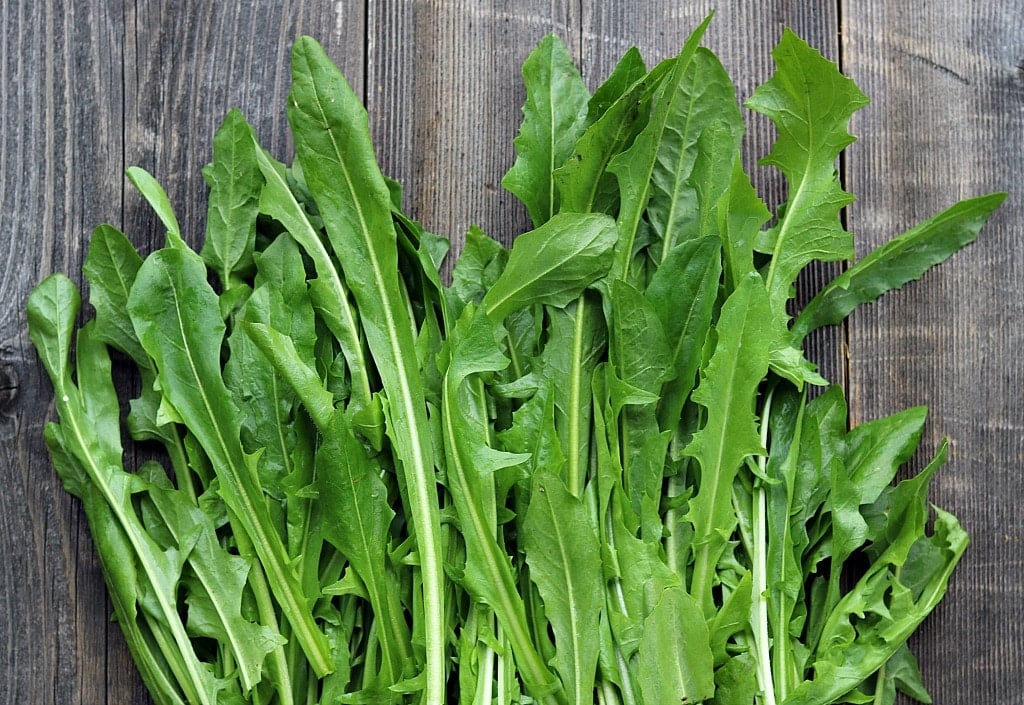
When harvesting wild greens from dandelions, look for big leaves with fewer lobes. They’re the tastiest and also tend to be less bitter than leaves harvested during the summertime.
These common weed greens make delicious use in fresh salads. They have a bitter taste similar to arugula or radicchio. Just pick and wash the leaves, and they’re ready to go!
If bitter wild greens aren’t so much your flavor preference, make this zesty dandelion pesto. The lemon juice neutralizes the bitterness of the greens. Use it the same way you would any pesto!
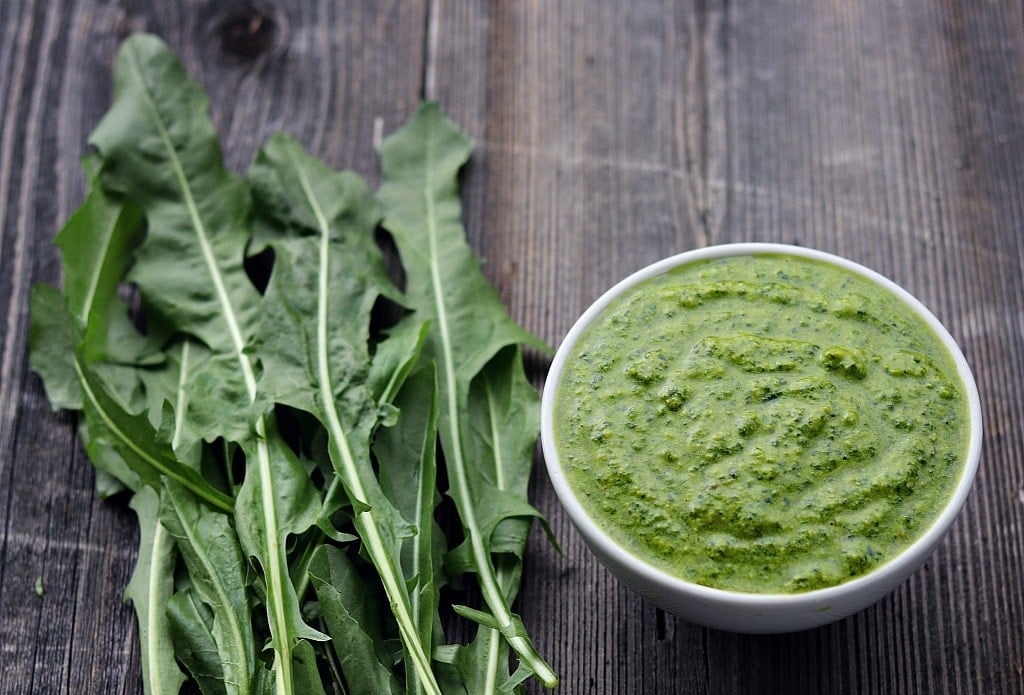
Are you worried about saving dandelions for the bees? You’re not alone! You might also consider planting a bee garden.
Wild Violet Greens
Wild violets (Viola spp.) are the first sweet little flower bloom I often see come early spring, and they are always a welcome sight! Their flowers and greens are both edible and full of nutrients, so don’t pass them by.
Easy to recognize for their violet color, foraging for wild violets is easy, and they’re one of the best edible weeds out there.
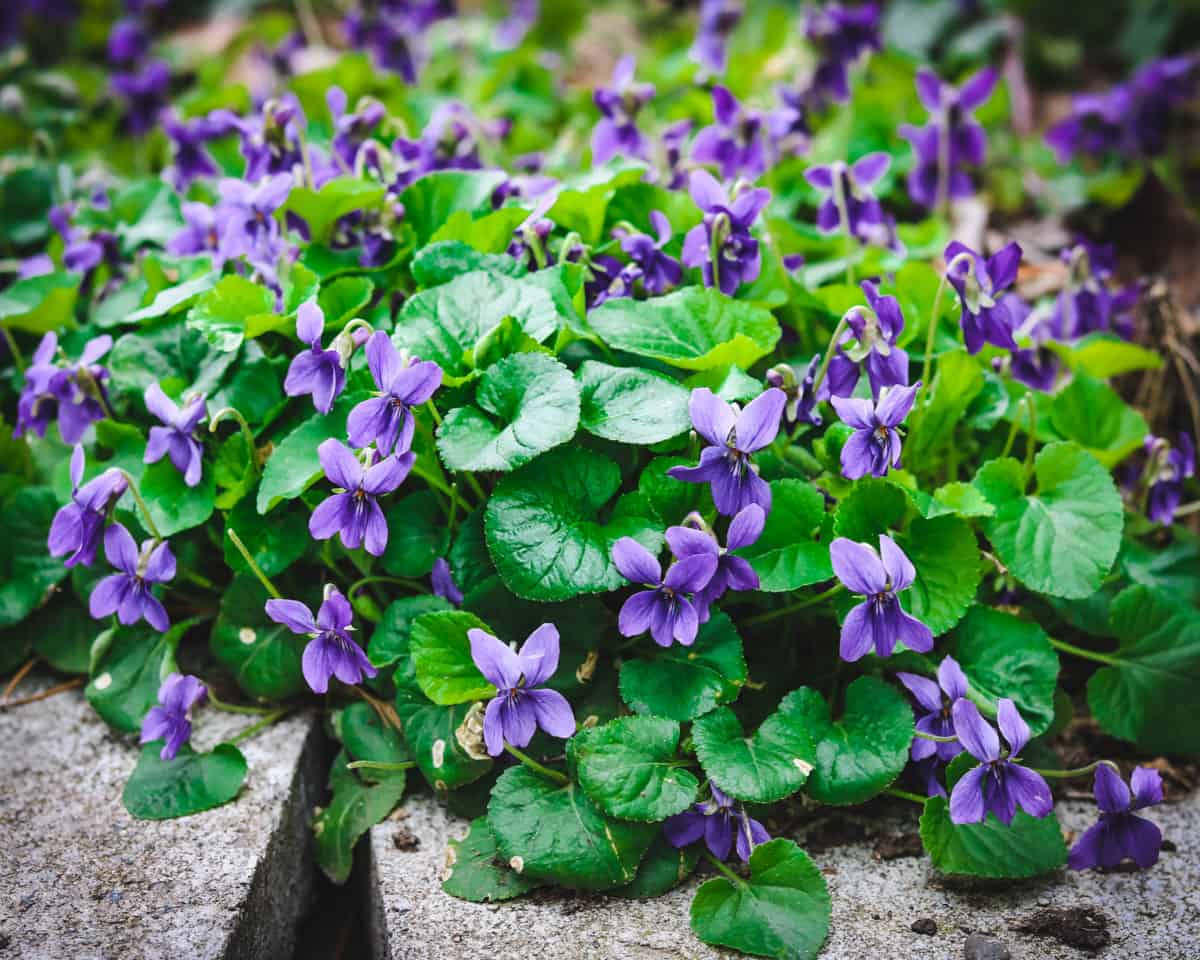
These beauties grow almost everywhere. If you don’t have them in your yard, they’re definitely close by!
While many violets have purple flowers, some are blue, yellow, white or multicolored. Yellow violet varieties aren’t used as often because they tend to have a laxative effect.
They grow low to the ground and prefer a shady wooded area. Their toothed leaves are a basal rosette and heart-shaped. The drooping flowers have five petals, which is a good identifying factor.
Using wild violet flowers in this violet-infused vinegar or this magical color-changing wild violet syrup is an easy way to access the flower power of these edible weeds.
When identifying wild violet greens, it’s important to note that their heart-shaped leaves look very similar to lesser celandine (Ficaria verna), which is toxic. Wait for the blooms to identify them correctly.
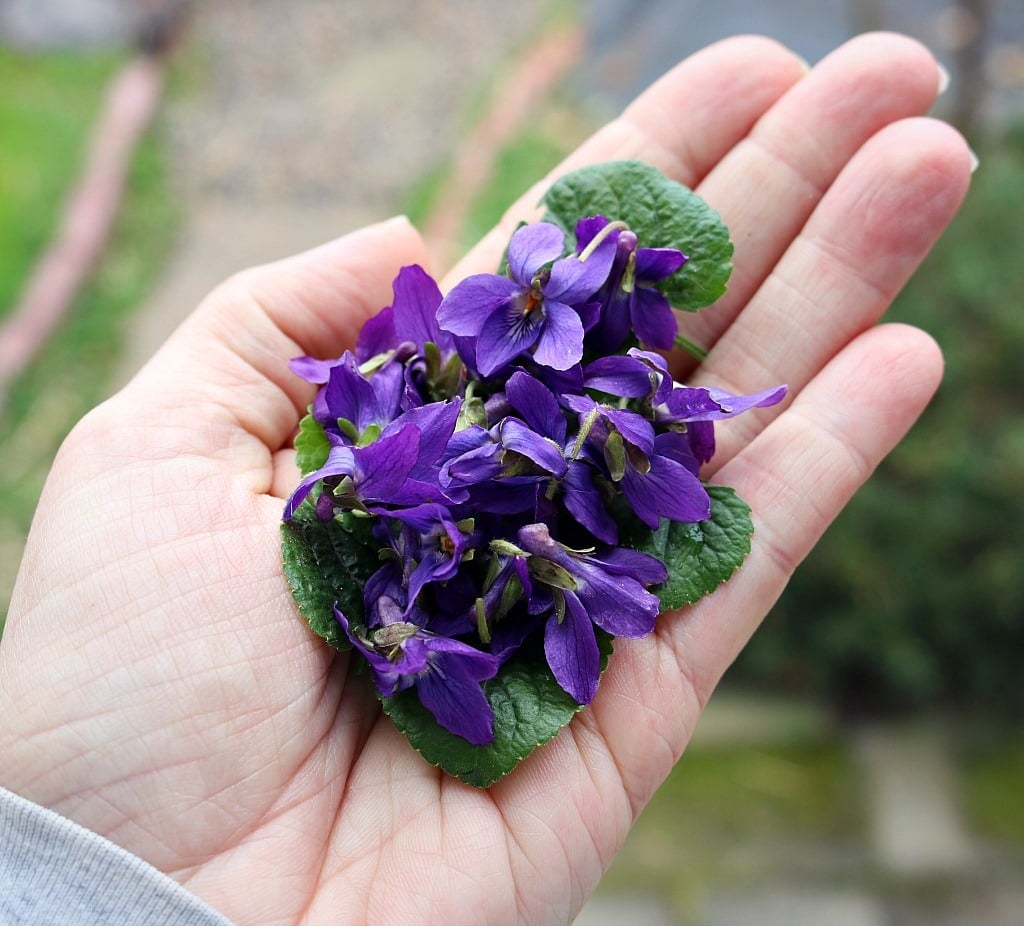
As an edible wild plant, the leaves of this purple low-growing beauty are okay to consume either cooked or raw, and are loaded with vitamin C.
Make a wild violet leaf tea with the greens on this plant, or add the greens and flowers to a salad. They’ll bring beauty and deliciousness to anything!
Chickweed Wild Greens
Chickweed (Stellaria media) is a vast growing wild green that is edible and medicinal. It’s super easy to identify and forage as it’s a common weed that grows abundantly.
Small and unassuming with tiny white flowers, chickweed is a highly nutritious plant with many uses. Popping up in early spring, this is a top edible weed to keep your eyes out for when your region begins to warm.

You’ll usually find chickweed growing in large patches, which is why it’s considered a weed. The leaves are small and grow in what seems to be a tangled, matted way.
Its small white flowers are star-shaped with five petals, and it’s easy to identify by the single line of fine hairs that run down the stem.
To harvest, all you have to do is take some scissors and cut some off! Don’t worry, it keeps growing for the long haul, even after a good trim.
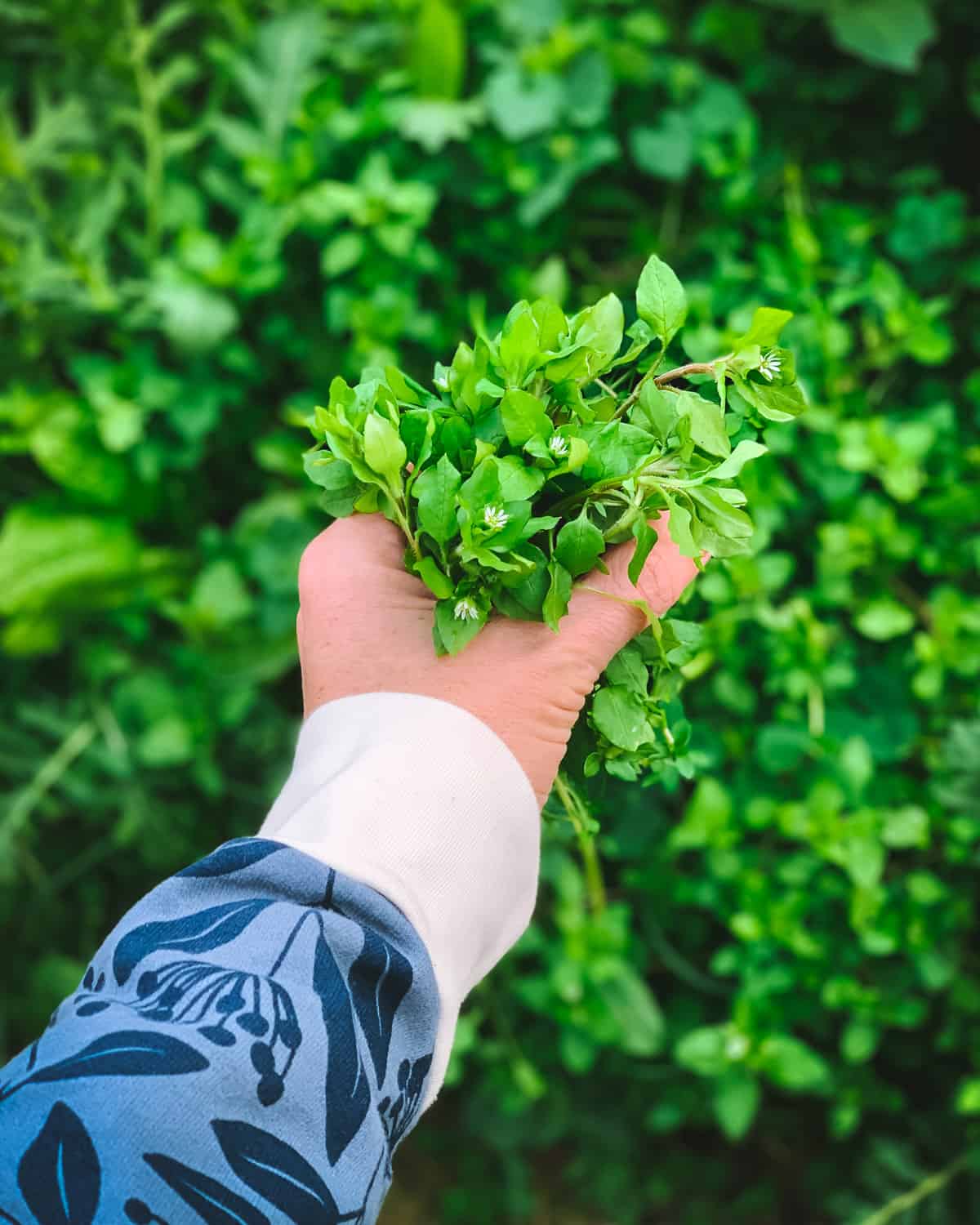
There is really only one important chickweed look-alike to know about, and that is Scarlet Pimpernel (Anagallis arvensis).
Chickweed is an edible wild green that can be eaten raw in salads or taste delicious and made into a superfood pesto. Or, since it’s partial to cool spring weather, you can blend and freeze it too.
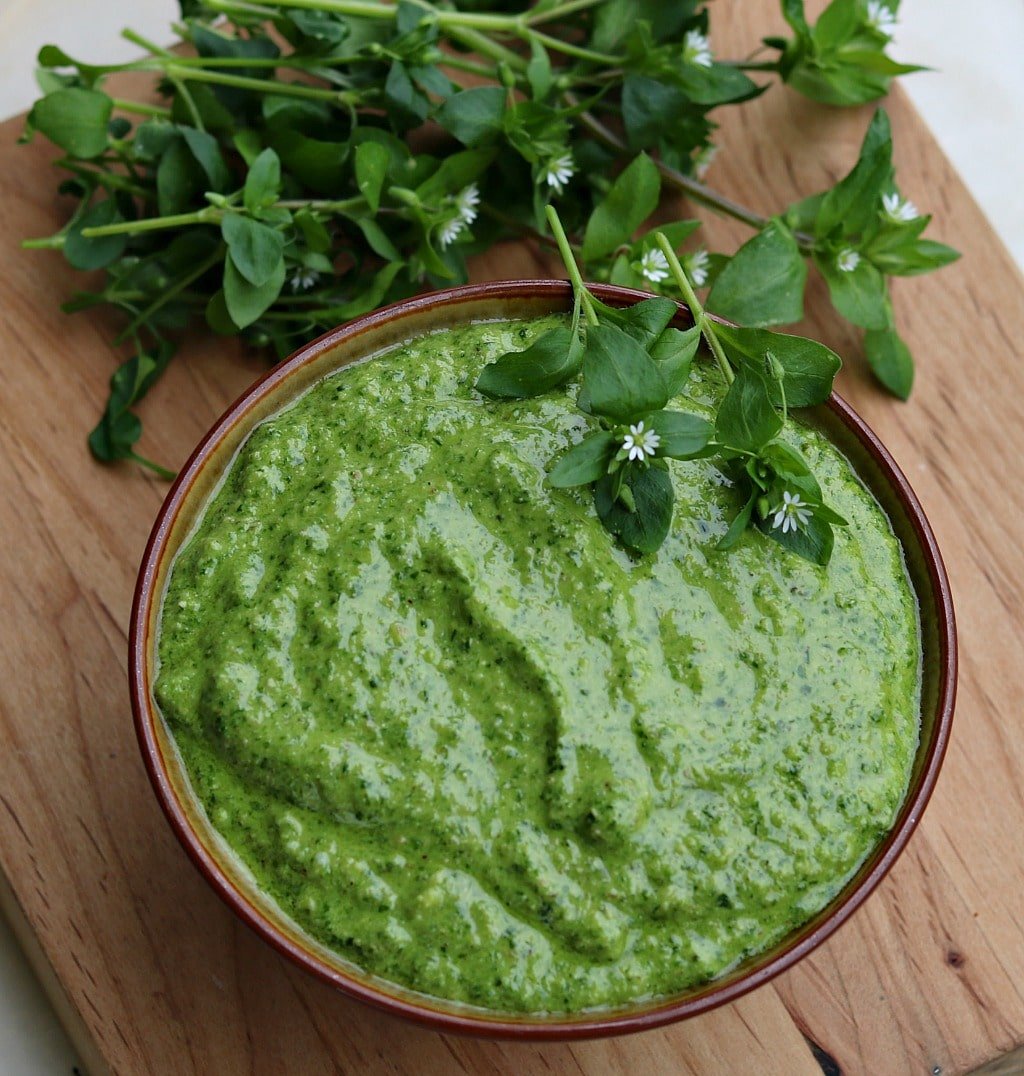
Another option is cooking chickweed in a soup, which is perfect for warming up on an early spring day.
Miner’s Lettuce
Miner’s lettuce (Claytonia perfoliata) is basically the king of wild greens and has a history of keeping scurvy away from California’s gold miners. That’s where it got its name!
The large patches of these edible wild weeds are full of vitamin C, keeping people healthy then and now. These wild greens are super healthy and are just as important today as they were then.
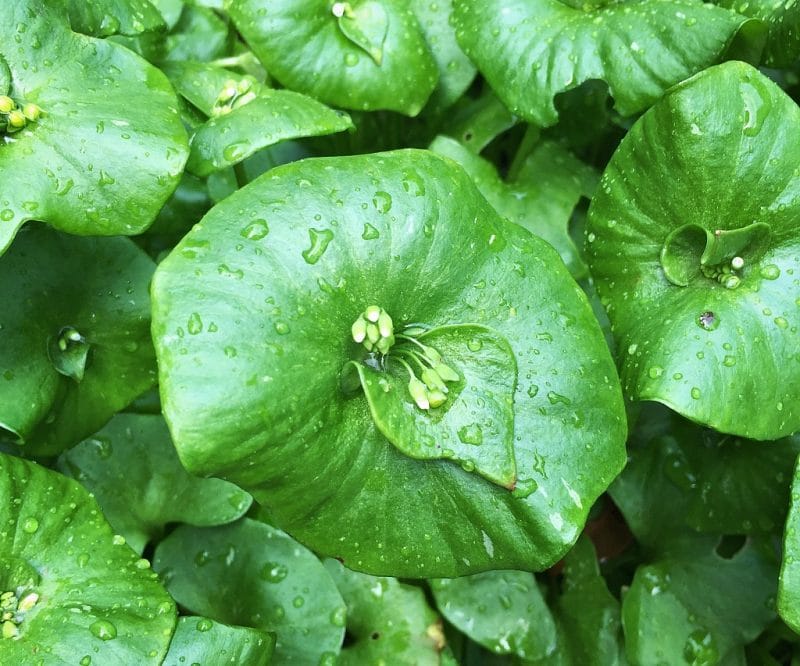
Miner’s lettuce grows plentifully and is easy to identify and forage. It looks like a small lily pad leaf that is around one to six inches across with white or pink flowers in the center and grows in vast patches.
They prefer to grow in shade, and like all the others on this list is an edible weed you’ll find in early spring. Eat miner’s lettuce raw in salads or sautéed with eggs, just like spinach.
Purple Dead Nettle
Purple dead nettle (Lamium purpureum) is a wild green that is a really special plant. It has so many uses and is a highly nutritious edible weed. It’s so easy to find and forage for, and you probably don’t have to look far!
You’ve probably seen purple dead nettle at your feet, whether you understood what an amazing common plant it is. It tends to grow in patches and is in the mint family. Like other mint plants, it has a square stem.
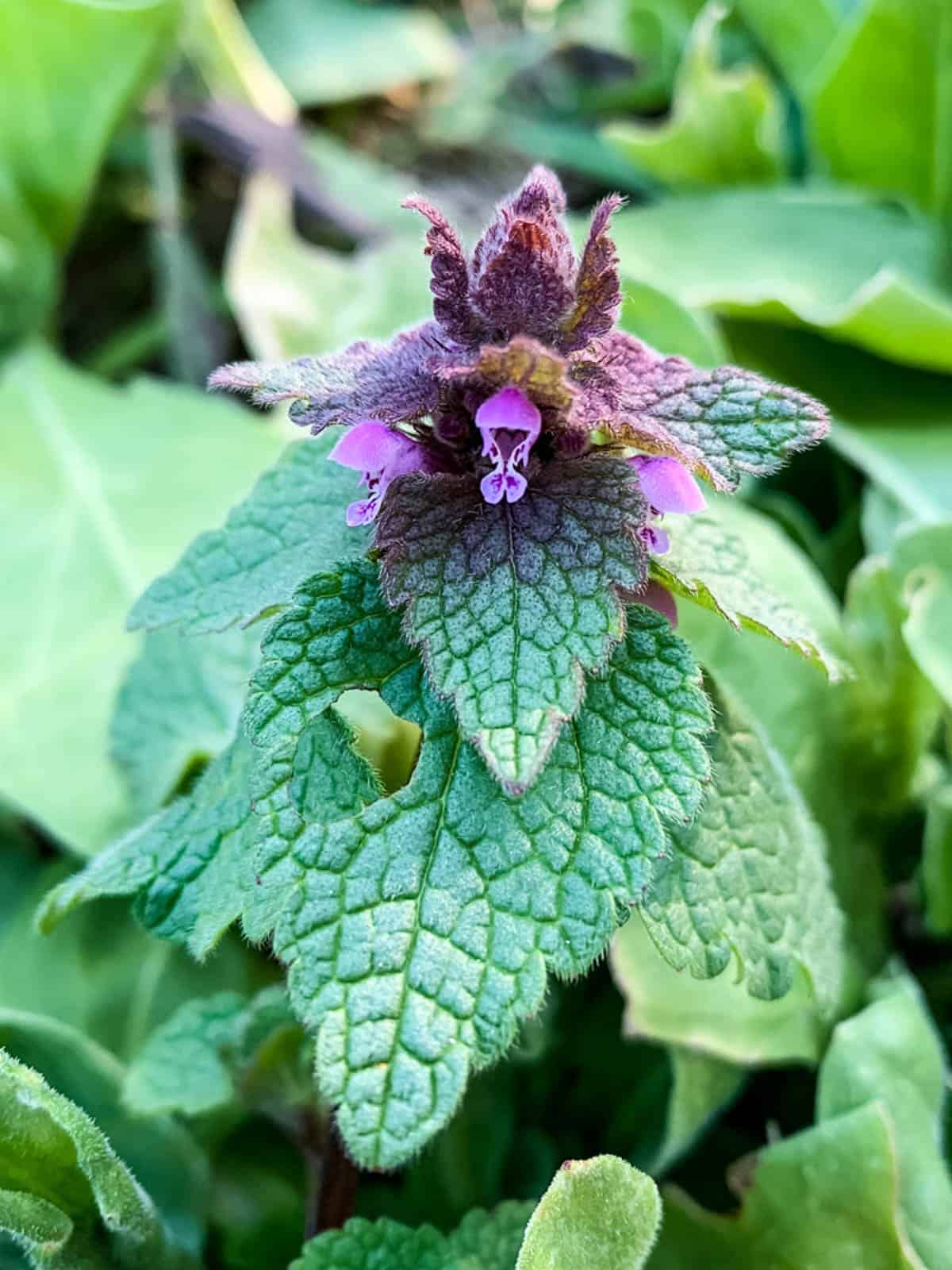
The leaves are fuzzy and have purple tops and little pink flowers. While usually low growing, they can grow around ten inches tall in certain instances. Luckily, they don’t have any toxic look-a-likes!
Purple dead nettle does resemble henbit, but it’s another safe edible weed so if you mix them up it’s nothing to worry about. Read more about henbit next up!
This fuzzy edible weed is a highly nutritious superfood. All the leaves are edible, and the purple tops even taste a bit sweet. Due to their texture, they’re best mixed in a salad or with other greens.
Or, make this delicious purple dead nettle pilaf for a great way to cook this nutritious plant.
Henbit
Henbit (Lamium amplexicaule) is a close relative of purple dead nettle, and it shows! It looks similar and is just as edible and nutritious. No worries about mixing these two up!
This wild green often grows right in the same area as purple dead nettle, too, as it prefers the exact same growing conditions.
The main difference in looks between henbit and purple dead nettle is the arrangement of the leaves. Henbit has leaves surrounding the stem, while purple dead nettle has triangle-shaped leaves.
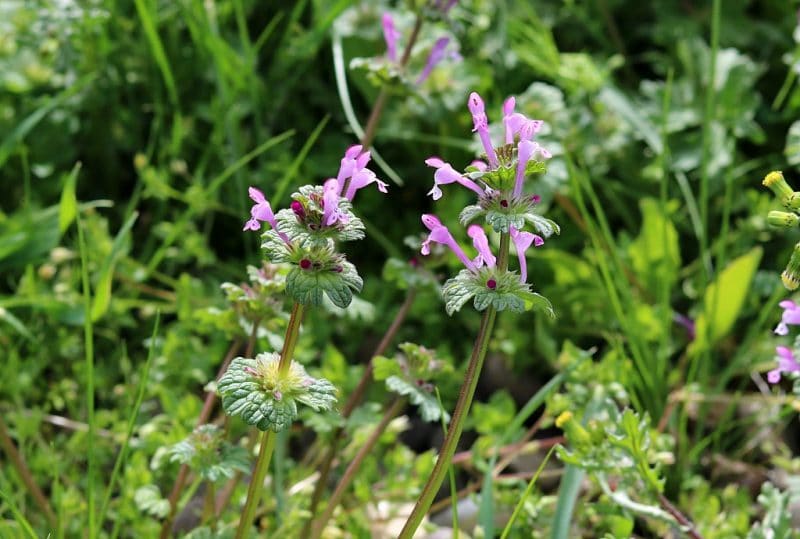
Henbit is an edible wild plant that has anti-inflammatory properties and digestive benefits. It can be added to a wild green salad mix or made into a cup of tea.
Ground Ivy
Ground ivy (Glechoma hederacea) is a common weed that grows almost everywhere worldwide. It usually grows on lawns and spreads with runners that tend to take over an area.
While seen as a weed, this edible wild green is actually really beautiful with its low-growing cover of green leaves and small purple flowers. It has a minty smell and is easy to forage.
Harvesting in early spring is best before it gets too bitter, although it tends to be slightly bitter even when young. The whole plant is edible, including the shoots, leaves, and flowers.
Ground ivy grows low and winds itself into mats; it makes a great ground cover and will stifle other unwanted weeds with its take-over quality. Each stem has 3 to 7 flowers that are blueish purple.
It’s easily established in lawns and shady areas, although it’s resilient and can survive in full sun and disturbed areas with enough moisture.
Ground ivy resembles common mallow, purple dead nettle, and henbit. All of these wild greens are also edible, so don’t worry about mixing them up.
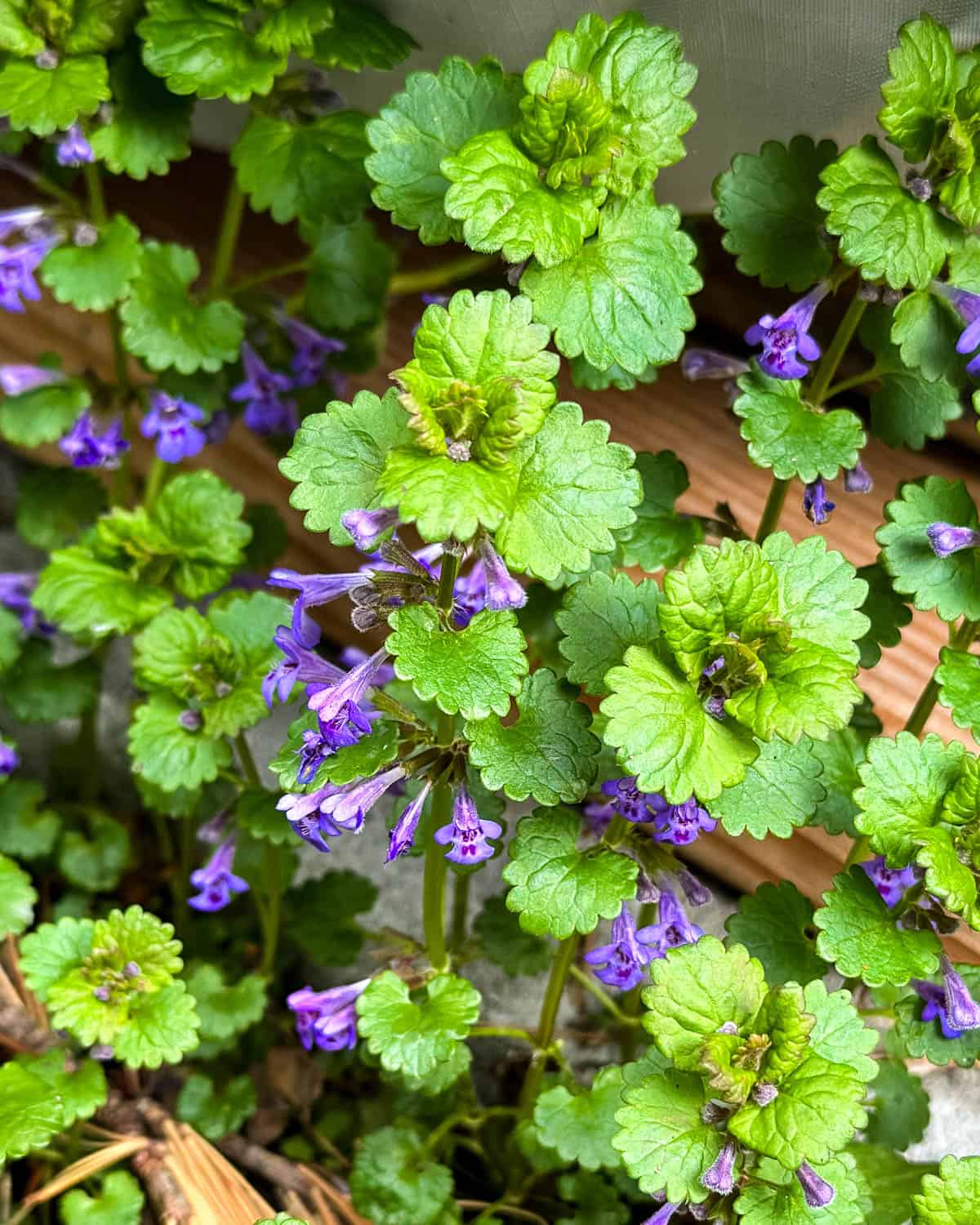
Ground ivy is a consumable and nutritious edible weed. In the past, it was used to make beer before hops became popular. Today, use it in wild salads or salad dressing, or to flavor meat or soups.
It’s a little bit minty, so in a pinch, it could replace mint in a recipe. Or, make horseradish and ground ivy-infused vodka for bloody Mary’s. Yum!
Yarrow Leaves
Yarrow (Achillea millefolium) is a dainty flower with frilly leaves that is both edible and medicinal. The unique feather-like leaves is what sets yarrow apart from look-a-likes.
The flower blooms of yarrow plants are white, pink, and sometimes yellow. It has a grooved stem with woolly hairs. This plant smells just like pine needles, so crushing it to smell is a great way to identify it.
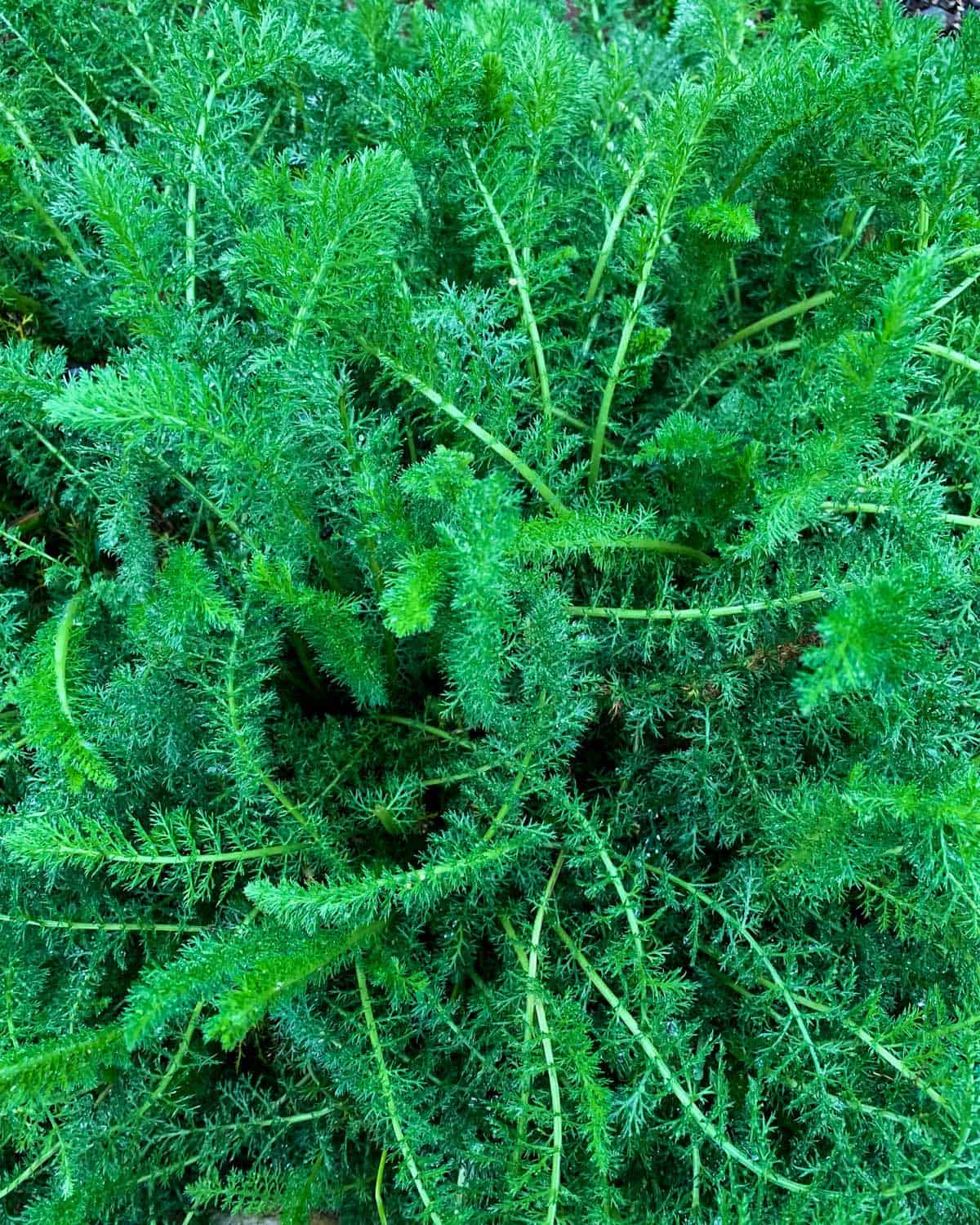
Occasionally, to an untrained eye, one might mistake Queen Anne’s lace or poison hemlock for yarrow. Since poison hemlock is highly toxic even to touch, it’s important to understand the differences.
The entire yarrow plant, including its flowers, leaves, stems, and roots, is edible and nutritious. Yarrow has a strong bitter flavor, but if the leaves are harvested in early spring they’ll be less so.
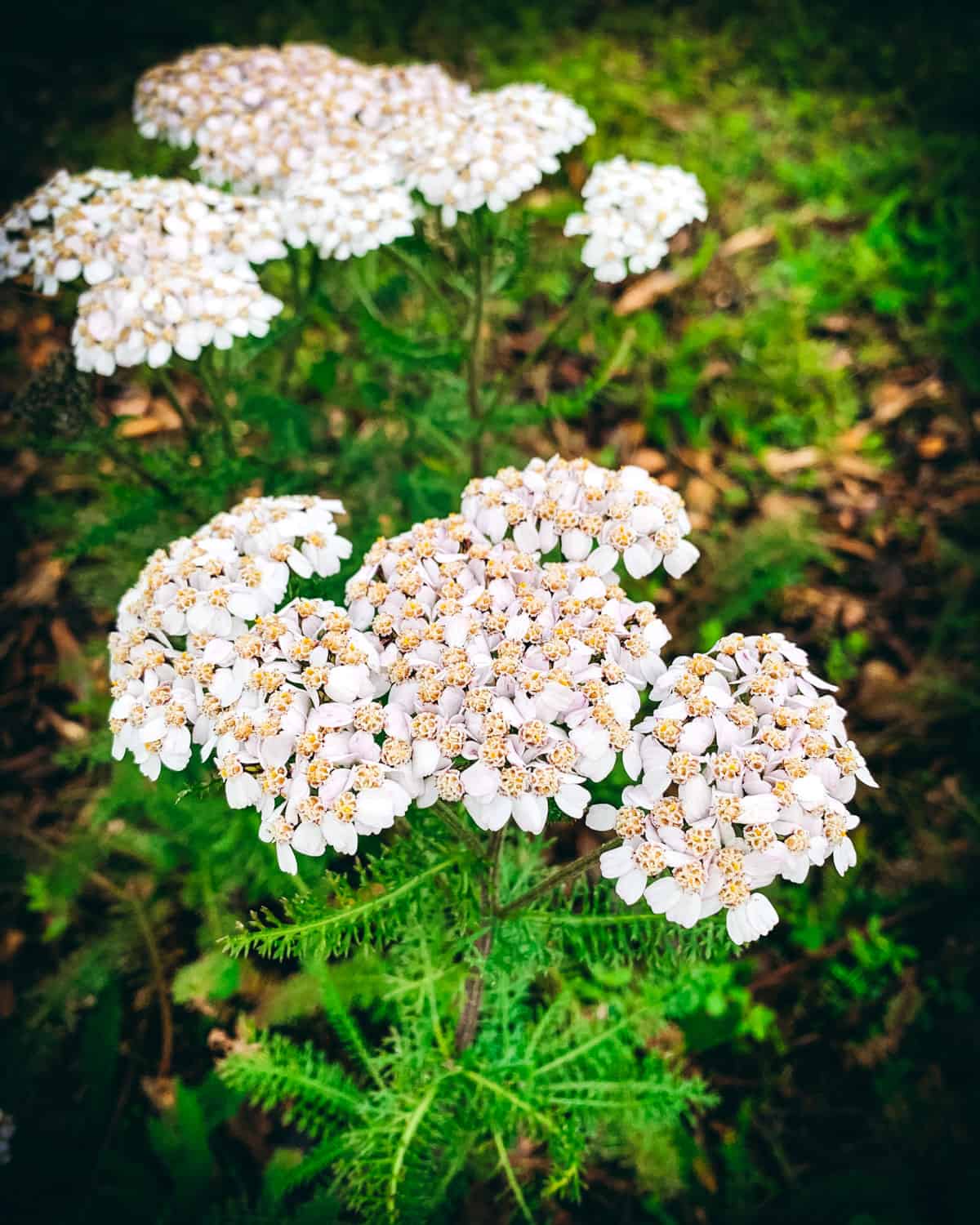
Round out the strong flavor with other fresh herbs in this penne aglio olio with yarrow, or use it fresh and make yarrow bitters.
Yarrow should not be used internally by pregnant women as it can potentially increase the risk of miscarriage. Using it externally on the skin is fine.
Plantain Greens
Plantain (Plantago spp.) is an edible and nutritious common weed with high medicinal and topical healing value. The wild greens of plantain grow worldwide, and you’ve likely seen it at some point in your life!
The leaves and seeds of plantain are edible and grow low to the ground. The leaves are distinctive, with prominent parallel veins that grow at the base of the plant.
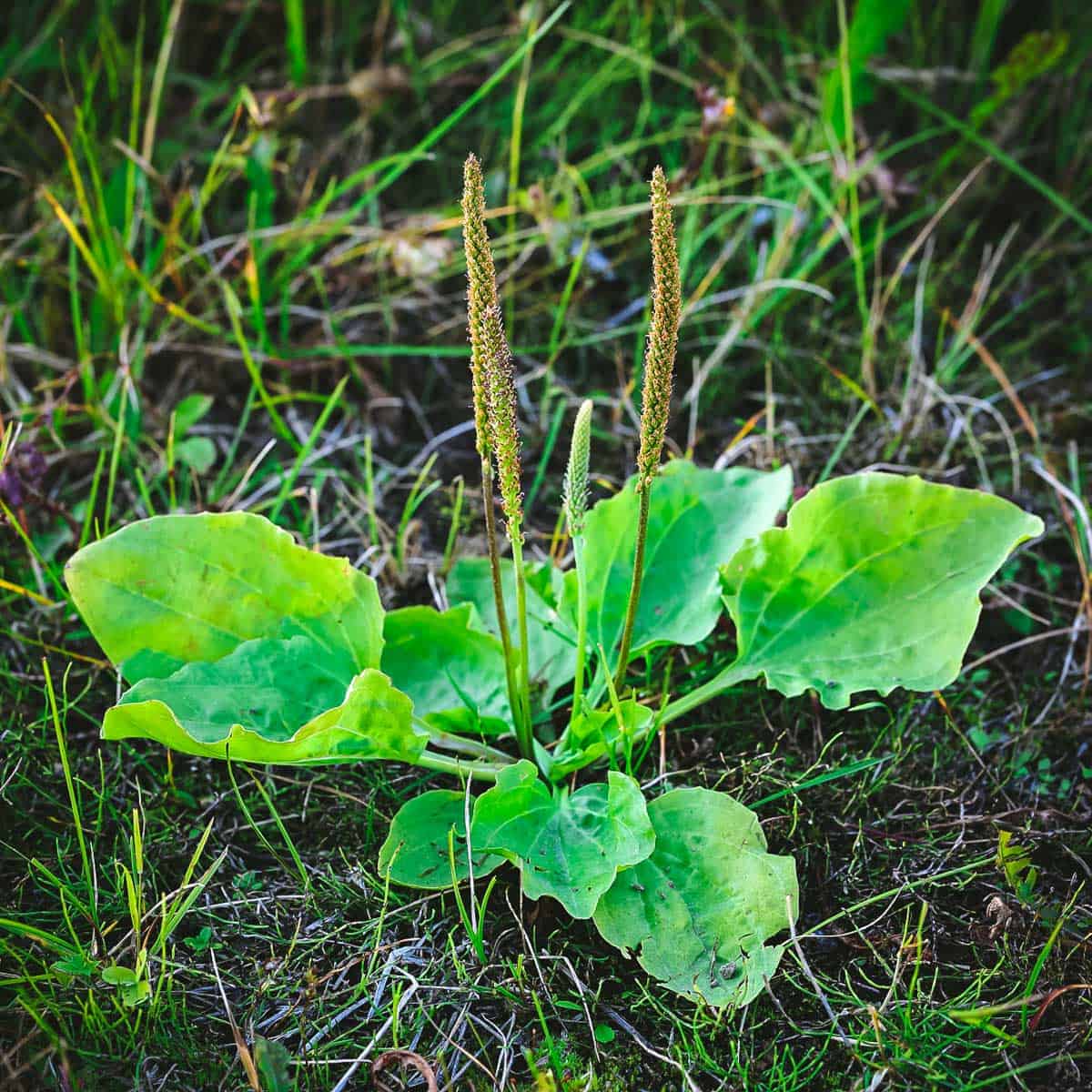
Plantain is also identifiable by its prominent central flower spike. This spike is covered in very small flowers, each with four transparent petals. It’s easy to identify and forage.
With very few look-a-likes, and the ones that do are not toxic, plantain is a great plant for beginner foragers who want to add some wild greens into their diet.
Plantain leaves are loaded with vitamins and minerals like vitamins A, C, and K. They’re also a source of iron, calcium, and magnesium.
Harvesting plantain seeds is labor intensive and only produces a small yield, but they can be ground into flour or left whole and sprinkled on top of salads for a little bit of yummy crunch.
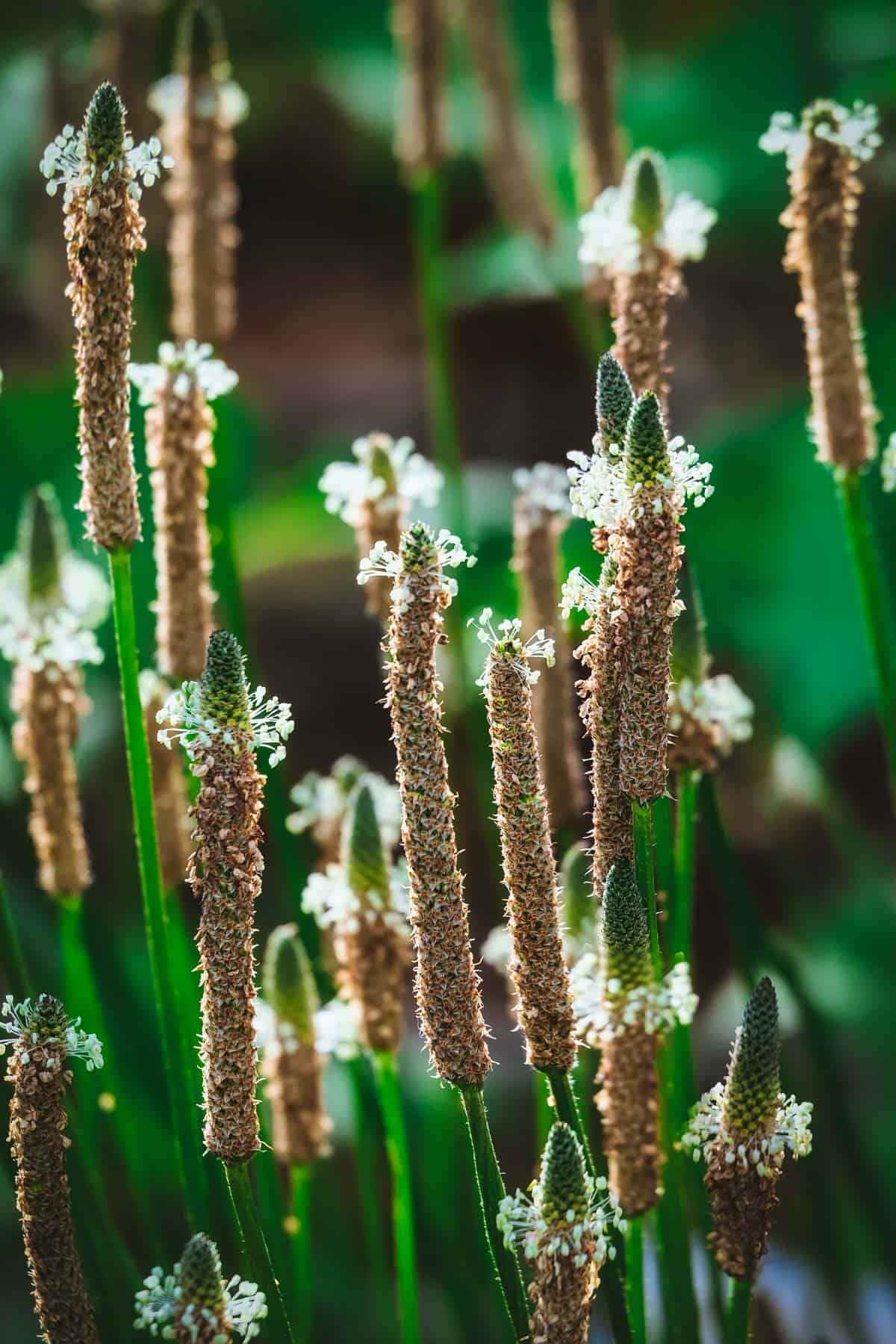
Young plantain leaves have an earthy, slightly bitter flavor, and they’re a welcome addition to soups and stews, just as you would with other dark leafy greens, or make these tasty baked plantain chips.
Cleavers
Cleavers (Galium aparine) are well known for their sticky velcro-type qualities. That plant your sibling used to pick and stick to the back of your sweatshirt or your hair? Yep, it’s cleavers!
Sibling rivalry aside, cleavers are highly nutritious wild greens that are good for the lymphatic system. They are totally edible, but I personally recommend blanching them first to remove their tiny sticky hairs.
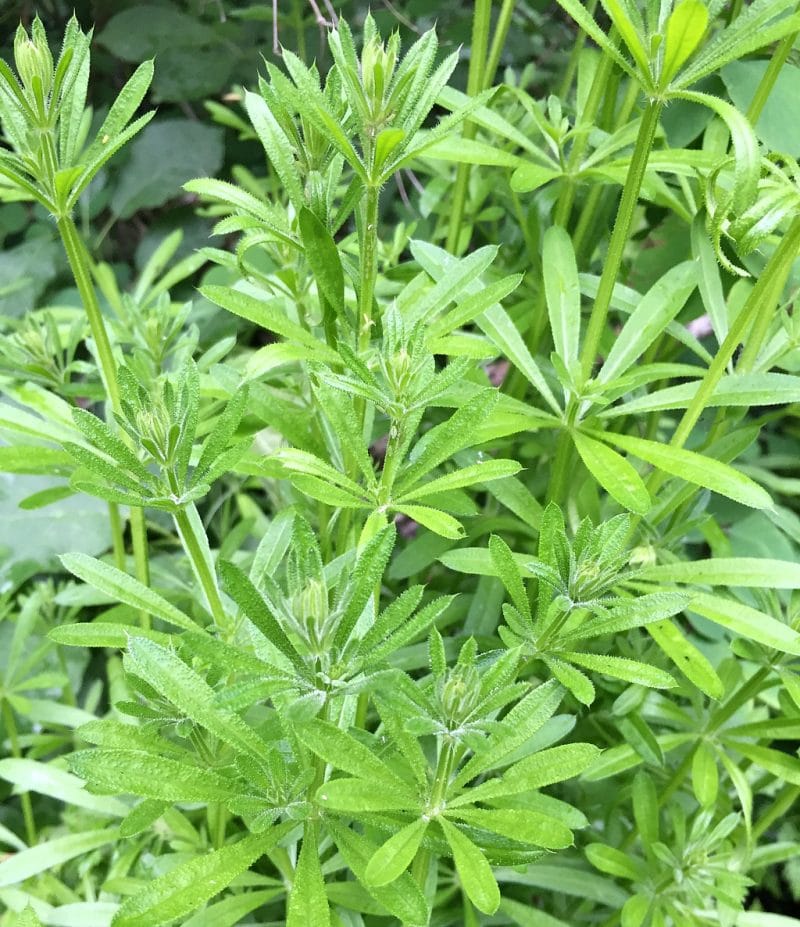
Cleavers taste similar to peas, with a more herby flavor. They can be made as tea, the shoots can be eaten raw in a salad, or you can blanch them like nettles and use them similarly.
Garlic Mustard Wild Greens
All parts of garlic mustard (A. petiolata) wild greens are edible and easily identifiable by their strong onion/garlic smell. They have mustard flowers with four petals and kidney-shaped leaves.
These are ideally harvested early in the season for the best flavor, so early spring is the best time to add these delicious common weeds to your meals.
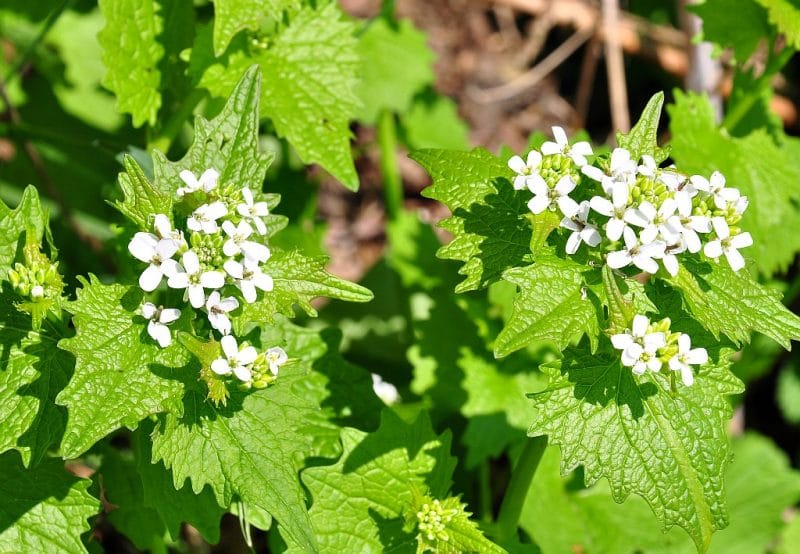
Believe it or not, garlic mustard greens are more nutrient-dense than spinach or kale! They might be a bit overpowering to some, but they can be consumed raw. Chop them up and sprinkle them on a salad or add to a marinade!
They taste like roasted garlic, which, for me, is a good thing. To mellow and compliment the flavor, add them to soups, stews, or pizzas. Wherever you want a little garlicky flavor!
Ramps
Foraging wild ramps is a whole thing, so I’ll preface this by saying, please do your research and forage them sustainably. Thanks!
Now that we have that established, these are absolutely delicious and nutritious wild greens you totally want in your meals when available.
If you live in the NE United States, you’re in luck, as this is where ramps are native. After a long, cold winter, these are some of the first wild greens we see in the northeast. Boy, are they a welcome sight!
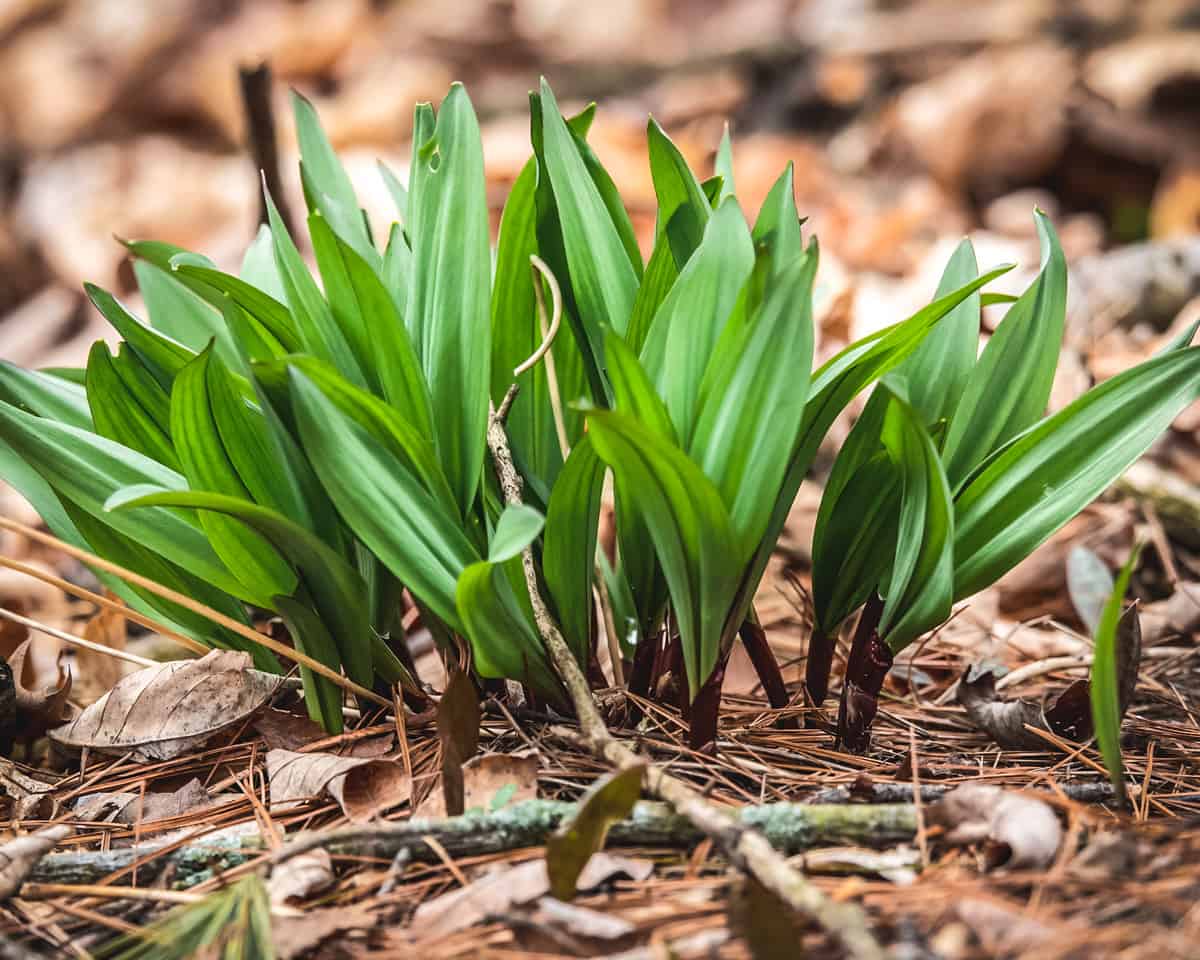
Ramps (Allium tricoccum) are a perennial species of wild onion with a strong onion or garlic flavor. They usually grow in clusters on the forest floor since they like damp areas.
Wild ramps are easily identifiable, between 4-12 inches high, with 1-3 broad leaves per plant and either white or reddish-purple stems depending on the variety.
A key identifying factor is their onion/garlic smell. There are a couple of toxic look-a-likes, so be sure to do your research and give them a whiff! If there’s not an onion smell, it’s NOT a ramp.
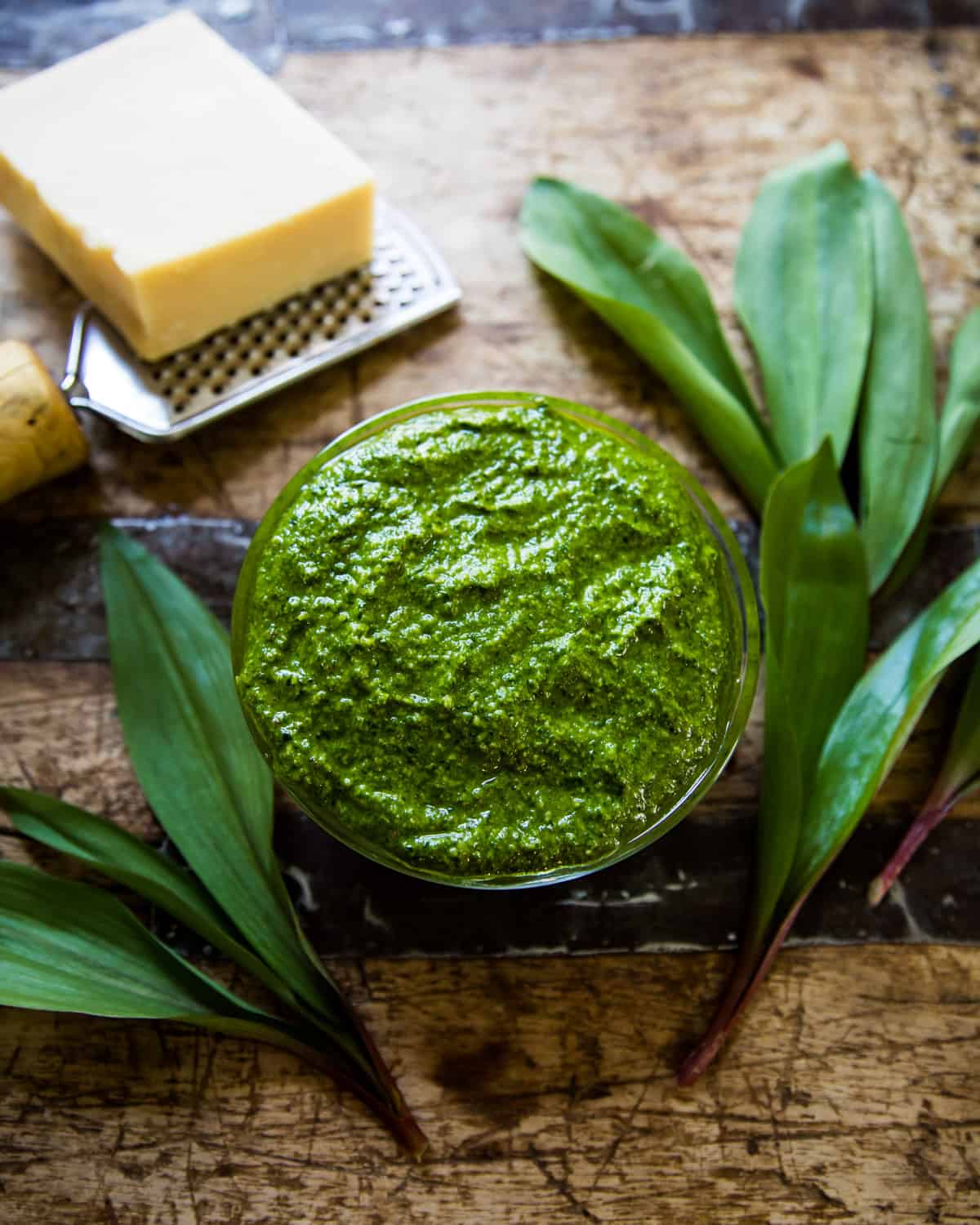
Ramps have a garlic taste, are safe to eat raw and make a delicious pesto. Or, make ramp butter and freeze it, or make pickled ramps. They’re delicious no matter how you use them!
Stinging Nettle
Stinging nettles do sting, as I’m sure you know. But! Don’t fret because they can be foraged without hurting and eaten without issue! Trust. These are highly nutritious wild greens you don’t want to miss.
It takes a little bit of preparation to forage stinging nettle, but it’s worth it. Stinging nettle grows in most of the US except Hawaii, and is easy to find in damp areas like the Pacific Northwest.
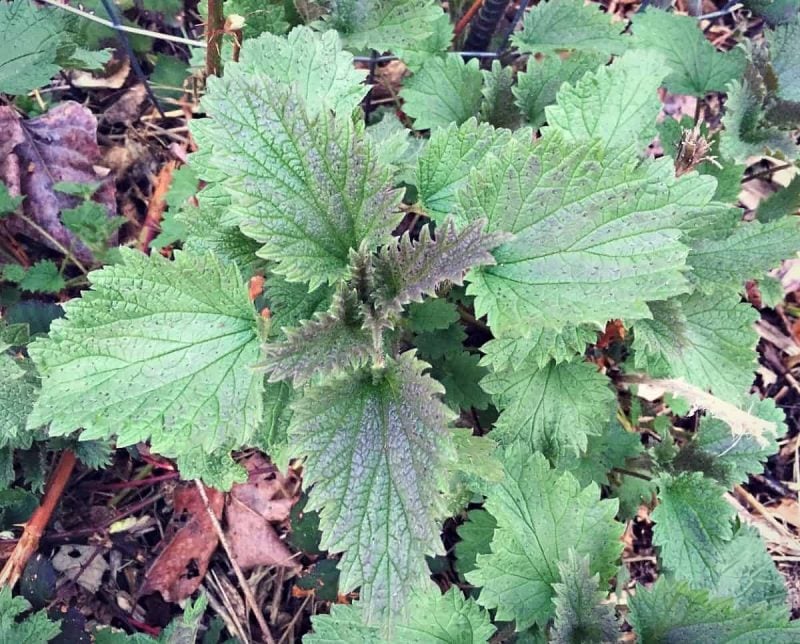
Before consuming stinging nettles, they must be steamed or blanched so you don’t get stung. After that, you can eat them just like any other wild green! Make a nettle iced tea, add to omelets, make pesto, and more!
The possibilities are truly endless. Nettles are an awesome superfood with tons of vitamins and minerals. They are particularly high in vitamins A and C, iron, potassium, manganese, and calcium.

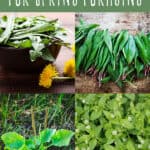
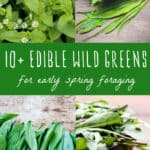

This is the secound article that I have see about Wild Edibles. Why has Poke Weed not been mentioned?
As Spring is the only season, that it is Edible.
If you’re referring to Phytolacca americana, it is not edible and toxic to humans and pets.
Thank you, this was informative for me even though I live in the Netherlands. Chichweed,plantain grow wild here but I’m going to learn to search for some of the other ones. Nettles grow in abundance here as well. I’m going to go out and try them! Thanks again.